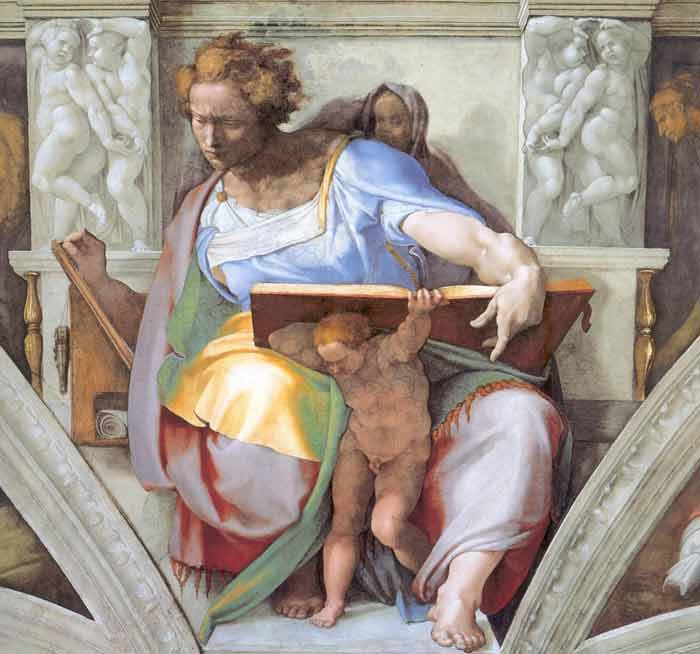Painting techniques – Cangiante
Painting techniques – Cangiante
Cangiante is one of the four canonical painting modes of the Renaissance (the other three being Unione, Chiaroscuro, and Sfumato). The word itself derives from the Italian cangiare (“to change”).
Cangiante is characterized by the painter’s changing to a different, lighter, hue when the original hue cannot be made light enough or, on the converse, changing to a darker hue when the original hue cannot be made dark enough. The painter may change, for example, from the color yellow to the color red (regardless of the object’s actual color) when painting shadows on a yellow object simply because the yellow he has to work with cannot be made dark enough to render shadows on that object (and the red can). There are, to be sure, other methods of rendering shadows (or highlights), but, often, the procedures available (mixing the original hue with black or brown) will render the shadow color dull and it may be the painter’s intention to render even shadows in more pure colors. One must also keep in mind that, in the Renaissance, the available colors were severely limited in number and kind.
The greatest practitioner of this technique was Michelangelo, and it is illustrated in many parts of the Sistine Chapel ceiling. In the image of the prophet Daniel, for instance, the use of cangiante can be clearly seen in the transition from green to yellow in the Prophet’s robes. After Michelangelo’s time, the technique found widespread acceptance and is now a standard painting technique.



This Post Has 0 Comments